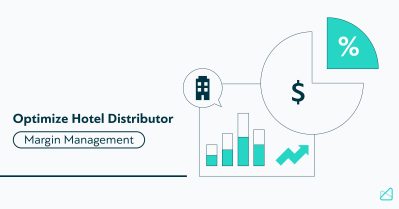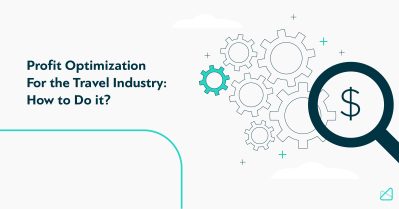6 Key Elements for B2B Revenue Management

Traditionally revenue management was initially used in the hotel industry. However, even though they weren’t aware of it, companies from different sectors have also been performing revenue management.
It was mostly limited to B2C companies in e-commerce or other sectors, but time has shown that this “business philosophy” isn’t limited to B2C. You can apply the same methods in B2B to get better business results. After all, tracking the customer journey towards buying a product is similar, though the implementation of revenue management is a bit different.
That’s why we will share a quick guide that can introduce you to this practice and help you use it to your advantage. Before we start, let’s see what revenue management is.
Defining Revenue Management
Revenue management involves using various pricing strategies and analytical approaches to find the right sale, the right price, the right customer, and at the right time. It’s used to predict micro-level consumer behavior so that companies can optimize their prices and product availability to get the highest revenue possible.
It’s all about understanding what customers think about a certain product’s value and then aligning your prices, product availability, and placement. Companies are always trying to answer questions like “What to sell, when, to whom, and for how much?”
Data-driven approaches to revenue management help answer these questions. It’s a detailed, strategic, and analytic approach that is closely tied to sales. This approach is only possible for business products that are limited in terms of number, availability, and target multiple customers.
Benefits of Revenue Management
A typical B2B sales process is governed by improvised revenue management practices. Even though they do bring in some results, they don’t have a directed and strategic implementation. Management and sales departments focus on metrics like expense ratios, daily calls, ratios between calls and orders to see if they are performing well.
They look at these metrics in the previous period and adjust their approaches accordingly. However, revenue management is a far simpler sales strategy with a managerial approach that provides more realism and relevance. It brings together vital information with promotion, products, pricing, and customer segmentation in mind.
Revenue management helps identify the most important things customers care about. Then it uses a strategic approach to segment markets while focusing on sales and the marketing strategy necessary. All of this allows the management to control both their profits and costs. It’s also the foundation for tracking sales efficiency across your sales funnel and different sales teams.
Revenue management in the travel industry is exactly what is described in the paragraph above, with a few specifics related to the travel niche. Tours operators and travel agencies consider these business practices as essential for growing their businesses nowadays.
The goal is to share this knowledge and the latest technology so that travel companies can manage and increase their revenues in the most optimal way, without a huge investment. There are a few companies that are helping the travel sector increase their revenue with data driven technology and one of them is, of course, Hotelmize.
You can easily compare how other sectors, like the biotechnology and pharmaceutical industries, are affected by revenue management. Take a look at this research by Gartner for more information.
Key Elements for Performing Revenue Management Effectively
If you want to do effective revenue management for a B2B purchase, your operation must have these characteristics:
Useable data
Constant demand
Flexible costs
Segmented customer markets
Fixed capacity
Perishable inventory
Useable data
Your revenue management system needs to have data concerning clients who haven’t shown up, prices and costs, how long your products are used, market segmentation, current demand, and your available supply.
All that information is required to see how these metrics relate to a salesperson’s investment in time for cancellations, revenue, and customer segment by a certain time frame (day, month, year). Luckily, there are various tools today that let companies gather all this important data and more.
Constant demand
Uncertain demand makes it difficult for sales managers to make the right sales team allocation decisions. Revenue management is often about matching demand with supply. Simply put, if you know what your demand is, you know how much you need to invest in sales and marketing to get effective revenue.
If you understand that you have a high demand for a certain product, skipping on a sale might be a good idea so that you can make the sale another day for a higher price. On the other hand, if you have low demand, you might be forced to sell at a discounted price to cut your losses.
Flexible costs
Sales staff have variable costs, including travel, communication, entertainment, commissions, and so on. However, the business itself also has fixed costs regarding its equipment, employee benefits, and salaries.
The pricing structure of your services or products needs to be high enough to overcome the combined total of fixed and variable expenses. Companies need to have the flexibility in their costs to accommodate for high/low demands to ensure they have positive revenue at all times.
Segmented customer markets
For effective revenue management, it’s essential to segment customers into groups that are time-sensitive and cost-sensitive. With this segmentation, companies can recognize when they can lower prices to generate more sales.
They can also recognize the opportunities to cash in on their higher prices while offering convenience to buyers in their pipeline. By identifying the needs of different customer groups, companies can effectively manage their buyers and sales teams to optimize costs and revenue.
Fixed capacity
Fixed capacity means that you have a constant amount of production of products or service availability. In these situations, companies can manage their capacities by lowering or increasing their prices according to demand. It maximizes their capacity and allows them to generate the most revenue.
Perishable inventory
Regarding the B2B sales pipeline, perishable inventory can be seen as the time salespeople waste during their work hours. Companies should measure how much profit their salespeople are bringing per hour.
That will make it easier to evaluate the value of a particular employee and divert them from tasks that would waste their time when they’ve met their sales quotas.
Conclusion
Companies are constantly prospecting for a better B2B buying process. It’s crucial to know when the buyer personas and buying journey have changed. That’s why companies need to step up and create a more optimized sales process that considers revenue throughout the whole process.
Subscribe to
our newsletter
Yay! You are now
subscribed to our
newsletter
Mize is the leading hotel booking optimization solution in the world. With over 170 partners using our fintech products, Mize creates new extra profit for the hotel booking industry using its fully automated proprietary technology and has generated hundreds of millions of dollars in revenue across its suite of products for its partners. Mize was founded in 2016 with its headquarters in Tel Aviv and offices worldwide.
Related Posts

Top Tips to Optimize Hotel Distributor Margin Management
5 min. Margin or revenue management in the travel industry is usually looked at from the perspective of hotels, airlines, rental companies, F&B, and other organizations that deliver travel products. But margin management applies to all of the organizations that deal with perishable commodities within the supply chain. Travel agents, OTAs, tour operators, and other […]

This is how dynamic packaging impacts tour operators
8 min. When Thomas Cook collapsed in September 2019, headlines suggested that the demise of one of the oldest travel companies in the world was the final nail in the coffin for the traditional package holiday. In truth, traditional tour operator package holidays, usually sold offline and consisting of set flights and accommodation, remain popular, […]

Profit optimization for the travel industry: How to do it?
5 min. In good times or bad, it is important to optimize your ability to generate profit. The best way to do this is to take steps to increase your profit margins. These steps include accurately measuring your margins, carefully calculating your total costs, considering the 80/20 rule, looking at your existing sales, plus upselling […]
